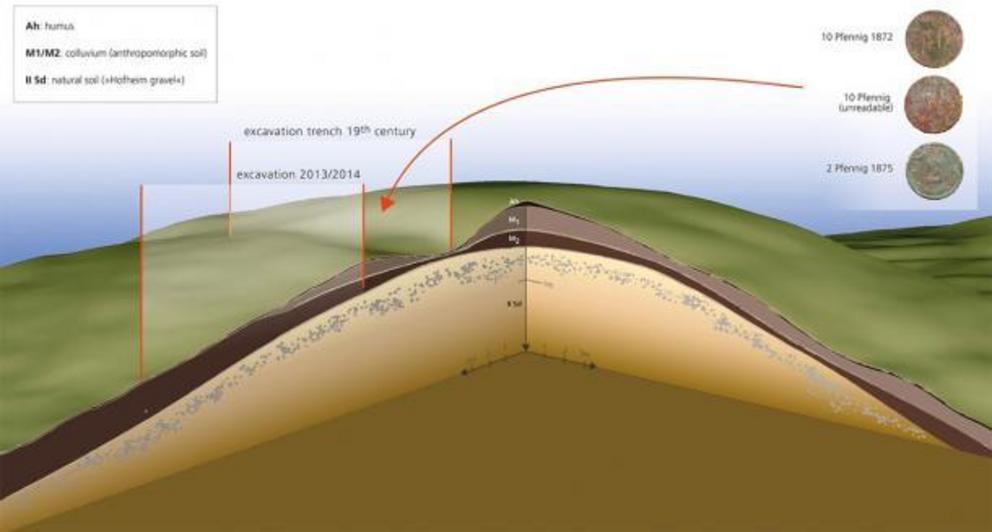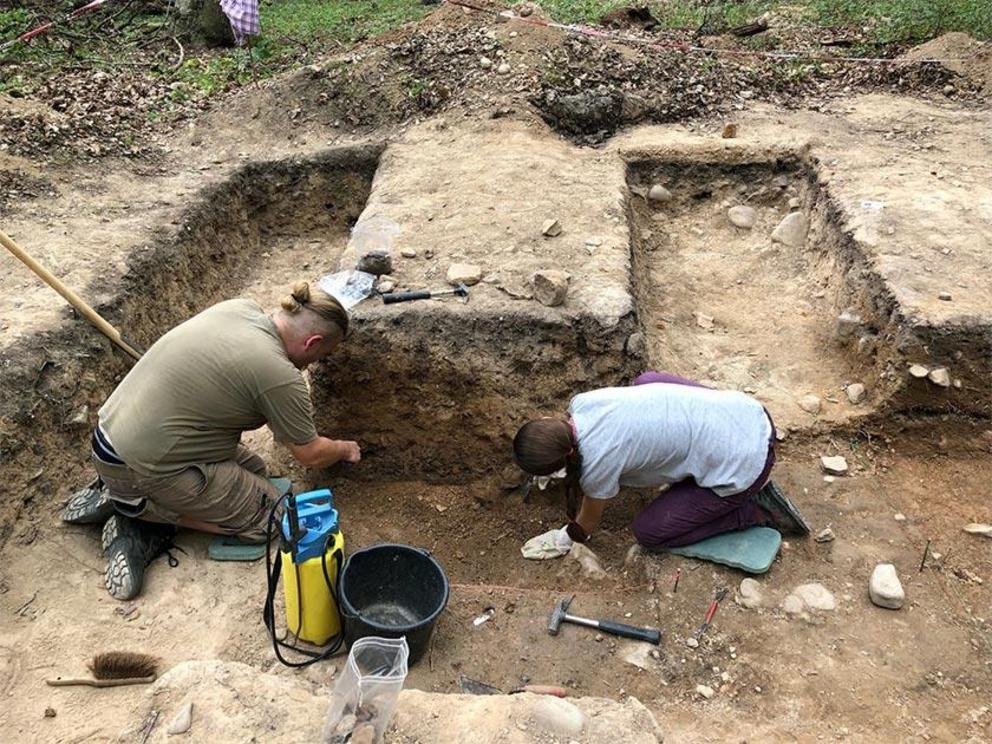6000-year-old German burial chamber destroys Egalitarian ideologies
Archaeologists investigating the German burial site.
Archaeologists in Germany have discovered a 6,000-year-old hilltop burial mound that indicates Neolithic societies were much more hierarchically organized than previously thought.
The story of the German burial site begins in the 1880s when two rare Neolithic axe blades, one of which was finely manufactured out of Alpine jade from Monte Viso in the Western Alps, were discovered at the hilltop site of Hofheim-Kapellenberg, near Hofheim am Taunus in the Main-Taunus district of Germany. The Rhine-Main region is located in a favorable climatic zone with exceptionally fertile soils and the pair of axes were discovered in a geographical location known as an ancient European trading hub with key topographical links between North and South, and Eastern and Western Europe.
Since 2008, this hilltop archaeological site has been investigated by the Römisch-Germanisches Zentralmuseum in Mainz ( RGZM), and Johannes Gutenberg University , together with the State Heritage Authority of Hessia and the Magistrate of City of Hofheim . A new paper published in the journal Antiquity says the two jade axe blades have been associated with the discovery of an ancient burial site, suggesting the Neolithic community was “more hierarchically organized than expected,” because only wealthy elites could have afforded the valuable axes and “extravagant burial.”
 One of the axe heads found at the German burial site.
One of the axe heads found at the German burial site.
German Burial That is Changing Opinions On Prehistoric Communities
In 2014, various areas of the hilltop’s interior were examined with geomagnetics by Patrick Mertl MA of Johannes-Gutenberg University, and the geomagnetic map revealed several “anomalies” in the soil that were identified at the time as “former pits.” To determine exactly what these anomalies were, the sixth excavation phase began in September 2015 by local excavation leader Jonas Nowaczek, and students of the Johannes Gutenberg University, in a collaboration between the RGZM and Hesse ARCHEOLOGY .
Excavating the area in front of the Kapellenberg provided several clues as to the type and duration of the settlement revealing that this hilltop archaeological site comprises not only of an entire Neolithic rampart, but also a village that held about 900 inhabitants between 3750 and 3650 BC. While the massive defensive ramparts have been known since the late 19th century, the burial mound, measuring 90 meters (295 feet) in diameter, predates the village having been built between 4500 - 3750 BC. And the two valuable jade axe blades have been associated with this recently discovered burial mound, which tells archaeologists that the Stone Age society was more organized, “hierarchically,” than previously thought.
 3D-section through tumulus based on lidar scan, excavations, and coring (three-fold vertical exaggeration at the German burial site.
3D-section through tumulus based on lidar scan, excavations, and coring (three-fold vertical exaggeration at the German burial site.
Salt Sellers of the Ancient World
Knowing someone from an “elite class” was capable of amassing the wealth necessary to obtain these two rare axes for burial suggest to the archaeologists, life in the Neolithic Michelsberg culture (4300-3500 BC) was not as egalitarian as was previously thought. However, what is not yet clear is whether the expansion of this elite social structure was due to “conquests or migration by a hierarchical group, cultural interactions with such a society, or just coincidence is unknown.“
During the Early Neolithic, the Rhine-Main area was well connected to the west, evident in the jade axe blades from the Western Alps, and it is known salt from Hesse and Central Germany was traded for luxury items like these axes. While today we dash salt about like there’s no tomorrow, in ancient days, salt was a much sought-after commodity, especially in what is today France, where only a few inland salt sources existed. And along the course of the main salt trading routes, huge settlements such as Schierstein, Glauberg in the Wetterau, and Kapellenberg near Hofheim were built, each housing around 1000 people.
When Elites Were in Full Control of Society
In a news article about an archaeological discovery it’s difficult to fully express what such a discovery implies, but the terms “high-status individual” and “elites of society,” in the context of an ancient Neolithic community hold extraordinarily deep, and somewhat dark implications. Archaeologists have long known that the Michelsberg culture was ridden with violence, and that war played a major role in their expansion, and it is known captives often became slaves.
According to an earlier RGZM article, what this means in relation to the new discovery of the elite’s grave at Kapellenberg, which indicates a hierarchal Neolithic community, is that not only does the site come from a period that witnessed “the origins of today's global economy, but also their negative consequences such as human trafficking and inequality.”

